- JST Home
- /
- Strategic Basic Research Programs
- /
 PRESTO
PRESTO- /
- project/
- Topological Materials Science for Creation of Innovative Functions/
- [Topology] Year Started : 2020
[Topology] Year Started : 2020
Qianchun Weng
Elucidate electron dynamics in topological materials by nanoscale noise imaging
Researcher
Qianchun Weng
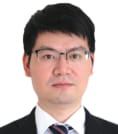
Visiting Scientist
Cluster for Pioneering Research
RIKEN
Outline
Various scattering and dissipation channels exist in realistic topological materials/devices. However, it is difficult to directly clarify those fundamental scattering and dissipation dynamics due to a lack of efficient experimental method. In this project, a conceptually new microscope called scanning noise microscope (SNoiM) is developed for directly visualizing nanoscale charge transport and energy dissipations and elucidate the detailed mechanisms of local scattering and dissipations at the surface of topological materials.
Hiroshi Kamata
Spin and charge dynamics in topological edge states
Researcher
Hiroshi Kamata
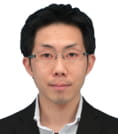
Research Associate
NTT Basic Research Laboratories
NTT
Outline
This project aims to investigate spin and charge dynamics in helical edge states of a two-dimensional topological insulator which is artificially created with semiconductor heterostructures. These dynamics and artificial topological phases will be electrically observed and controlled by means of radio frequency measurement techniques, which can be applied to various topological materials. The goal of this project is to pave the way for realizing topological fault-tolerant quantum computing.
Kyoko Kitamura
Development of Distorted-Photonic Crystal Science and Applying to Topological Beam Lasers
Researcher
Kyoko Kitamura

Professor
Graduate School of Engineering
Tohoku University
Outline
In this project, I will develop “distorted-photonic crystal”, which possesses lattice distortion in photonic crystals, to control optical orbit in real-space. Then, I will apply this unique characteristic of distorted-photonic crystal to photonic-crystal lasers, which lead the realization of spatial phase control of the output beams.
Tetsuro Kusamoto
Development of functions on kagome-honeycomb hybrid lattices based on radicals with three hold symmetry
Researcher
Tetsuro Kusamoto

Professor
Graduate School of Engineering Science
Osaka University
Outline
I challenge to develop a variety of highly crystalline coordination polymers with kagome, honeycomb, and kagome-honeycomb hybrid lattices by means of coordination reaction between metal ions and stable organic radicals with three-hold symmetrical structures. The goal of this study is to establish novel electricity-magnetism-photonics-correlated functions resulted from interplay between structural topology, band filling unique to radical-based molecular materials, and weak but nonnegligible electronic interactions between the components.
Yijin Zhang
Bulk photovoltaic effect in polar 2D materials and their van der Waals heterostructures
Researcher
Yijin Zhang

Research Associate
Institute of Industrial Science
The University of Tokyo
Outline
This project studies the bulk photovoltaic effect in two dimensional materials with polar structures and their van der Waals heterostructures. The bulk photovoltaic effect converts solar energy into electrical energy owing to the intrinsic Berry connection of materials. This effect is anticipated to be applied to future devices for solar energy harvesting. I will investigate the correlation between the emergence of bulk photovoltaic effect, fundamental physical properties, structure and symmetry of crystals. Through this project I aim to provide guidelines for future device applications.
Yosuke Nakata
Spacetime control of terahertz topological states induced by light
Researcher
Yosuke Nakata
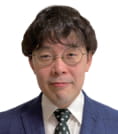
Associate Professor
Graduate School of Engineering Science
Osaka University
Outline
The development of dynamic control of artificial structures is essential to elucidate the fundamental nature of topological states and apply them to communication and sensing technology. In this study, we dynamically generate artificial structures with light and realize spacetime control of terahertz topological states. We aim to explore the essence of the bulk-edge correspondence as well as time-varying topological phenomena, by deepening the recently proposed concept of “topological-state generation by continuous deformation” with the developed experimental system.
Takuya Nomoto
First-principles search for topological magnets
Researcher
Takuya Nomoto

Lecturer
Research Center for Advanced Science and Technology
The University of Tokyo
Outline
Magnetic skyrmions and noncolinear magnets are promising candidates for future applications in spintronics devices. In this project, I will focus on the functionality of such topological magnets. In practice, I will investigate their transport properties and control techniques by developing non-empirical methods based on the ab-initio electronic structure calculation. The goal of this project is to make a database of functional topological magnets and predict a promising material for the device application.
Satoru Hayami
Theoretical study of novel topological magnets based on spiral structures
Researcher
Satoru Hayami

Associate Professor
Faculty of Science
Hokkaido University
Outline
Topological magnets have recently been found in a variety of materials. This research aims at clarifying the microscopic and macroscopic conditions, such as the stabilization mechanism and crystal symmetry, to realize topological magnets on the basis of the internal degrees of freedom in the spiral magnetic structures. Moreover, I will develop a theoretical design principle of topological magnets by constructing a database to list the necessary model parameters under each crystallographic point group.
Daichi Hirobe
Geometric properties of chiral-induced spin selectivity and molecular spin/light functionalities
Researcher
Daichi Hirobe
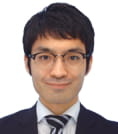
Assistant Professor
Faculty of Science
Shizuoka University
Outline
Chiral-induced spin selectivity has been investigated intensively in the field of chemistry, the essence of which remains to be clarified. This project is based on the correspondence of this selectivity and geometric charge rectification. Using this, I will explore molecular spin/light functionalities and their geometric properties. This approach will be effective in investigating topological aspects of chiral-induced spin selectivity.
Ryusuke Matsunaga
Development of functionalities in topological semimetals toward terahertz high-speed electronics and spintronics
Researcher
Ryusuke Matsunaga
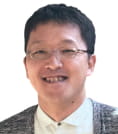
Associate Professor
The Institute for Solid State Physics
The University of Tokyo
Outline
This project focuses on opitical responses in topological semimetals associated with linear energy dispersion and Berry curvature. It is aimed at realizing efficient frequency conversion, stimulated emission, and control of magnetism in terahertz frequency at room temperature, which will lead to the development of functionalities in topological semimetals for high-speed electronics and spintronics.
Kei Yamamoto
Non-reciprocal surface waves: Anomalies in materials science
Researcher
Kei Yamamoto
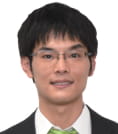
Senior Scientist
Advanced Science Research Center
Japan Atomic Energy Agency
Outline
Many of well-known wave phenomena, including acoustic waves and spin waves, possess robust surface localized modes that exhibit “non-reciprocity”; unidirectional propagation along the surface. This project attempts to reveal a possible link between the non-reciprocity of surface waves appearing in materials science and a theoretical concept in high energy physics: Anomalies. Anomalies characterize topological features of low-energy effective field theories, underlying the existence of surface localized gapless excitations that cannot be realized in a bulk system. By extending the principle to condensed matter physics, the project aims at predicting novel non-reciprocal surface waves that could be applied for rectification of heat and spin currents.













